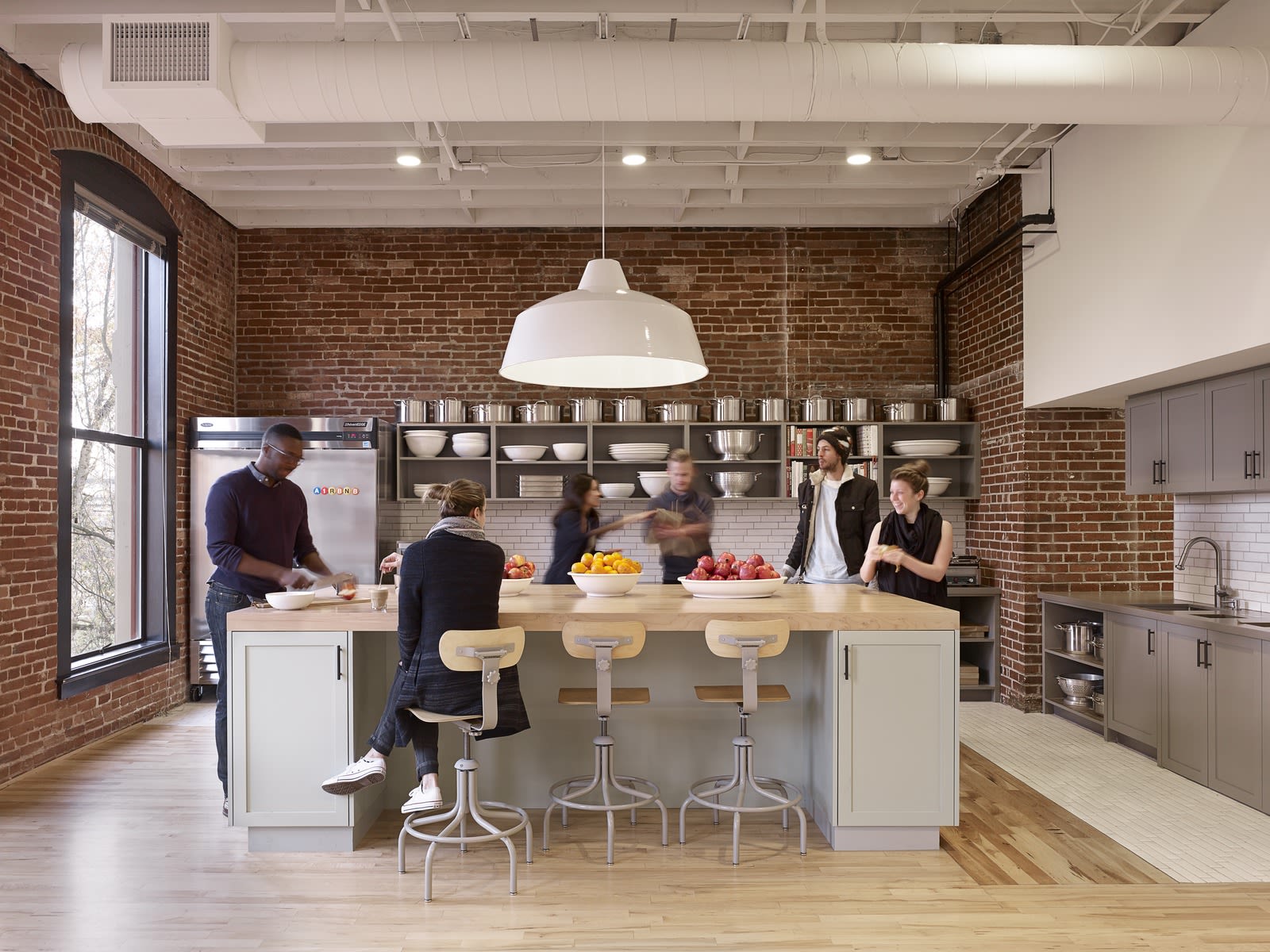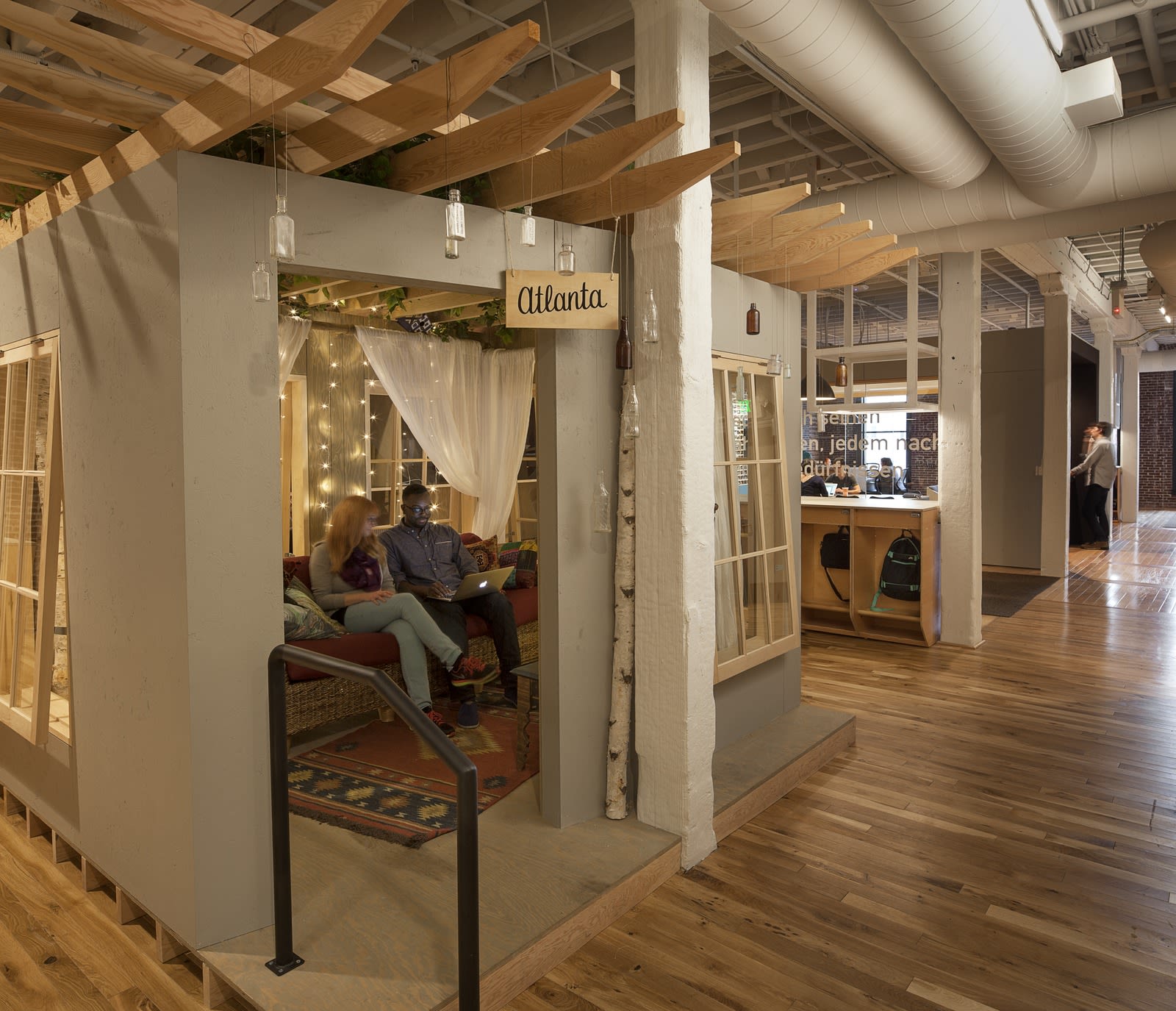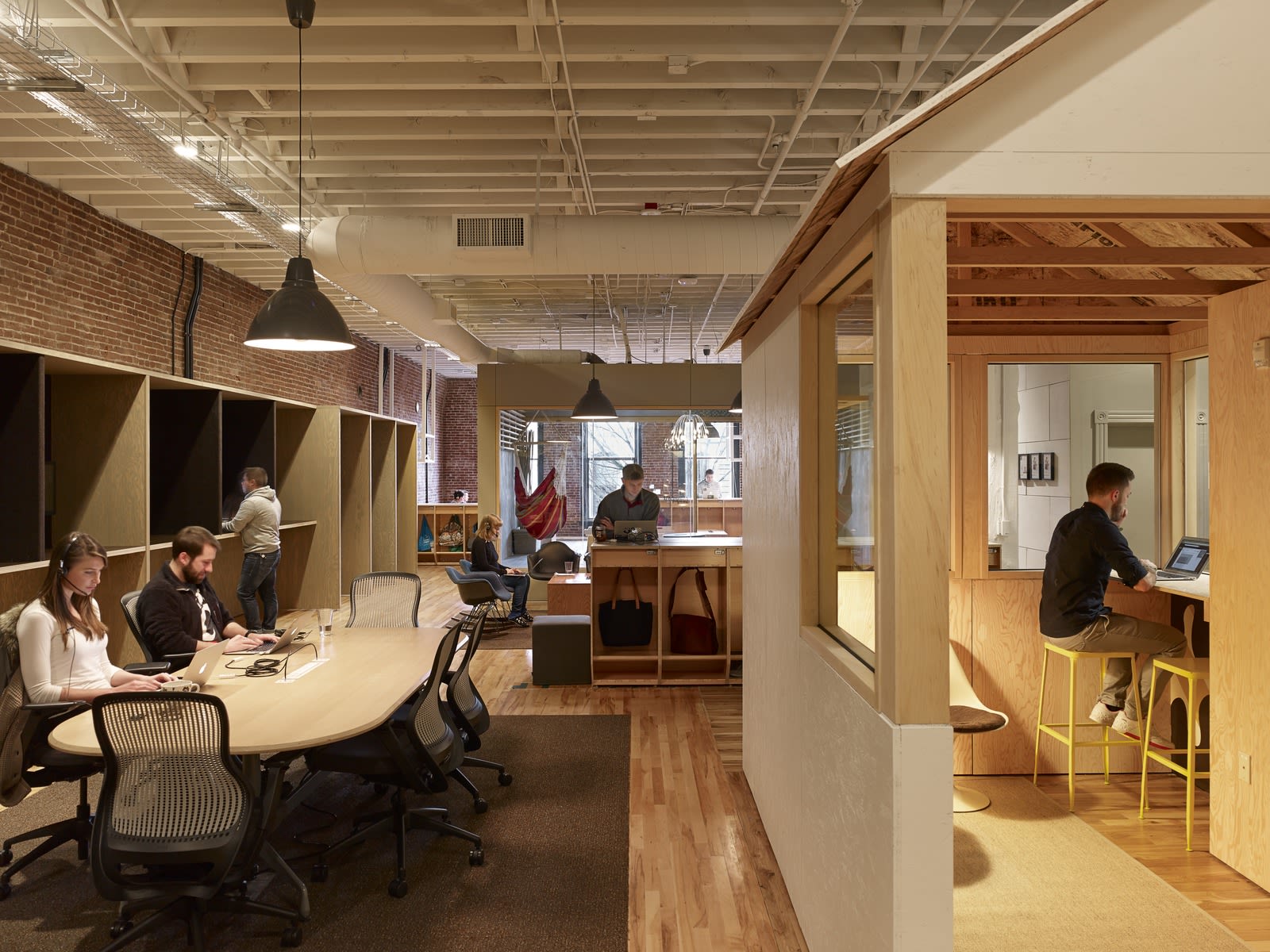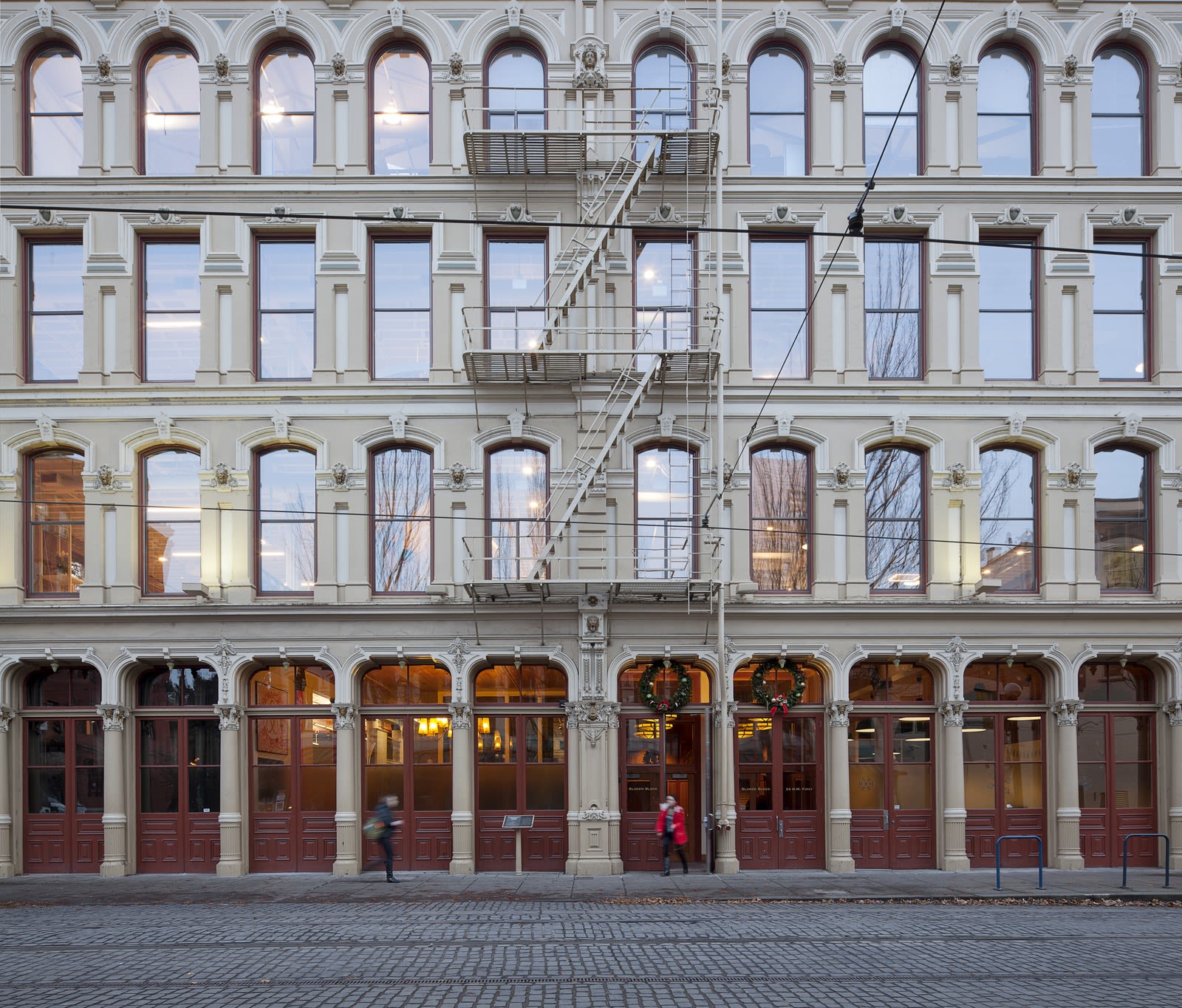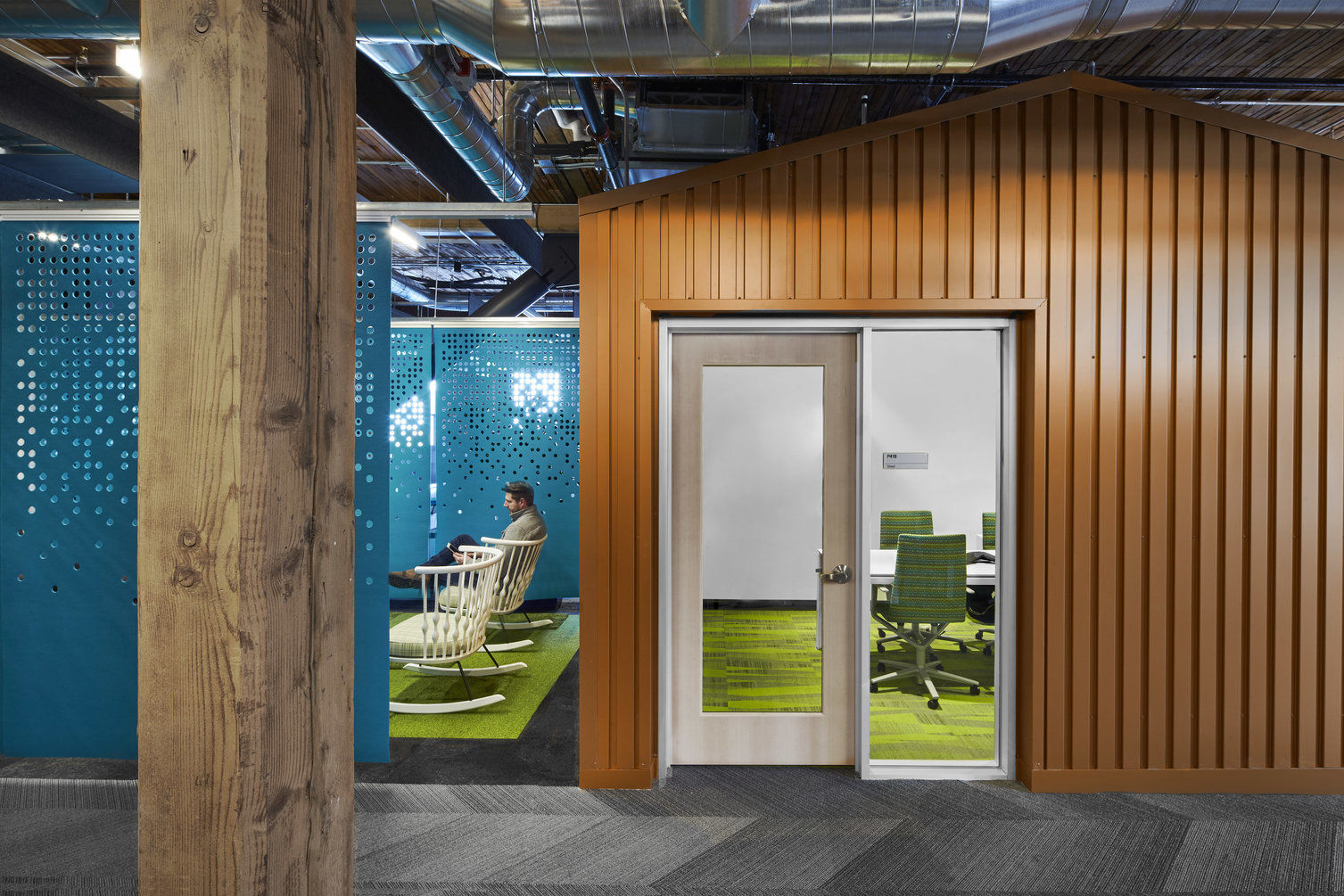How a Portland Firm Reinvented the Call Center
In 2014, when San Francisco-based Airbnb decided to set up a new customer service center in Portland, they entrusted Bora Achitects (formerly Boora) with the task of designing a worthy space in Old Town. The instantly recognizable "CX Hub" was one of the first in a wave of enviably cool tech offices in town. Kegerators just aren't enough anymore. Bora's design is a call center that you'd actually want to explore, featuring mini-buildings modeled off of actual Airbnb properties around the world.
As Airbnb expands its Old Town footprint, with a new engineering outpost coming this year, we spoke with Bora's Michael Tingley about how his firm reinvented the call center.
What was your mission?
It’s essentially a call center, but Airbnb was really intentional about creating an environment to not feel like a call center. A comfortable, relaxed, flexible space where employees could feel at home and have connections with their fellow employees, where they can move from one place to another depending on what mood they’re in, whether they want to sit or stand, or they want to be somewhere quiet where they can focus, or take a break and be social.
So one of the first things was to not consider the environment a place where you sat at a desk and put partitions around you, creating the awful environment we know so well from the Dilbert cartoons. In some respects, that environment feels like the antithesis of an office.
Compared to other projects, was it difficult?
Trying to do that in less square feet than you’d find in a normal office environment was particularly challenging. In a normal office, there’s around 100 square feet per employee. The Airbnb office is about 70 to 75 square feet per employee.
We’ve worked for a variety of tech companies, and design firms and advertising agencies, looking to be efficient and provide amenities that you don’t normally associate with an office: great kitchen facilities, places where you can cook food onsite, or play areas where you’ve got a pool table or a ping-pong table. The call center quality of this project was somewhat unique. The employees essentially spend their day on the phone.
How did you handle that?
Airbnb has some advanced headset technology that has a masking system in the microphone that helps cut out noise coming in from the periphery. And it also projects your own voice through your headphones. It’s a challenge with phone calls because people don’t hear their own voice, so they tend to speak louder. And then everybody in the environment is speaking loud to make sure they’re heard.
We also did a lot of acoustic treatments to bring the ambient noise level down.
What sorts of things?
You’re basically looking for materials that will absorb sound. In an office environment, the two best surfaces to do that is the ceiling and the floor. Occasionally you’ve got walls, like in conference rooms, but in big, open environments, the walls are not very effective. So we installed cotton padding in the ceiling and walls. It’s an older building and it’s got exposed wood joists, so we had it installed between those elements. In all the enclosed spaces we had acoustic absorption ceilings. The floor was all hardwood, and Airbnb wanted to keep that, so we put in area rugs, and also a whole series of nooks that are felt lined. That absorbs a lot of the sound.
How does the CX Hub fit into the rest of your portfolio?
I would characterize it as part of the “Starbucks phenomenon.” You see people at coffee shops all the time, working away at something alone, but they want to be in an environment where they’ve got other people around them and it feels relaxed. Creating a variety of settings and giving people choice is becoming a pretty consistent thing in office environments. The fact that so many people work on laptops, it gives people the flexibility to find a space to suit their mood or where they can interact with other people spontaneously.
